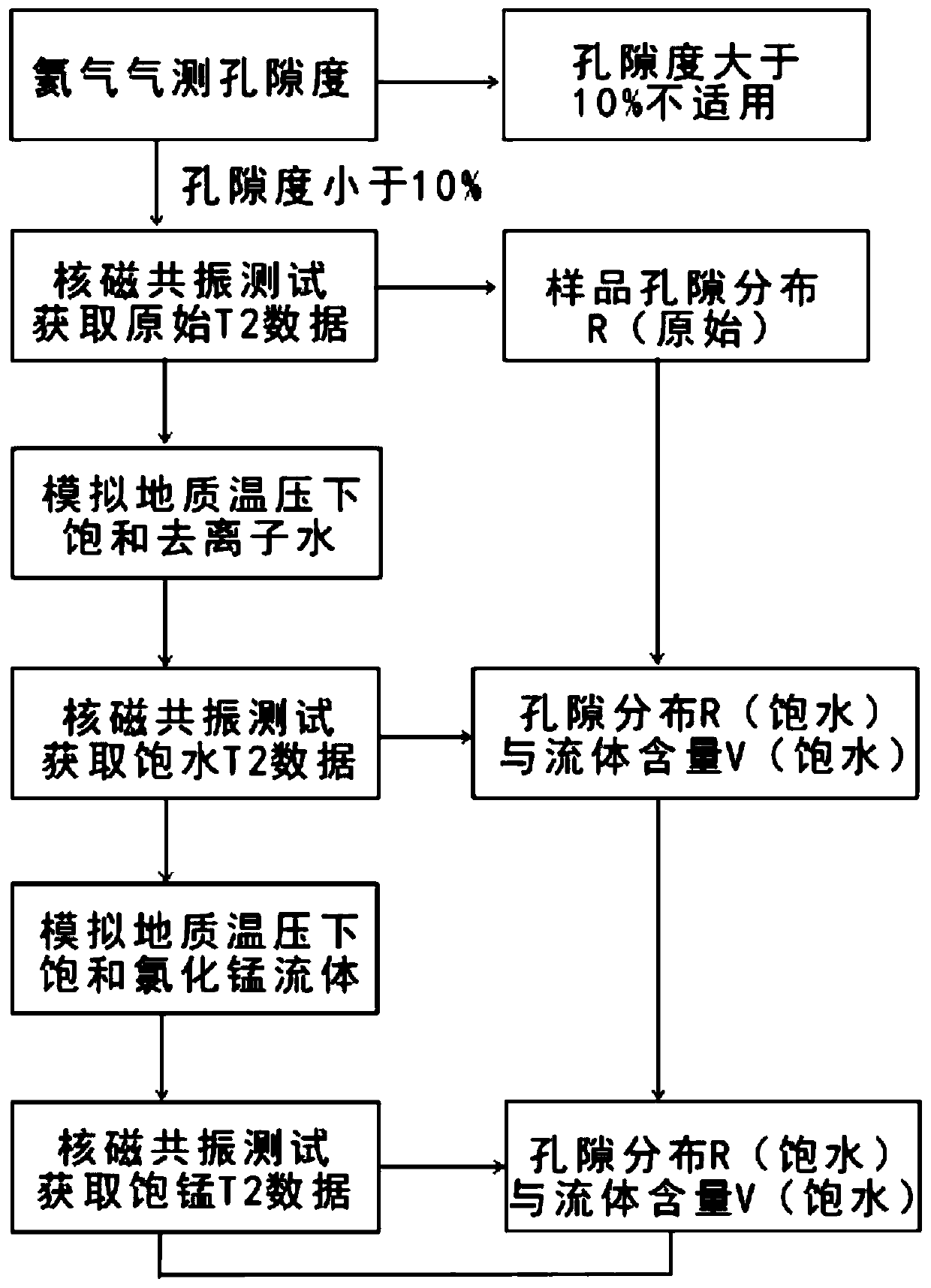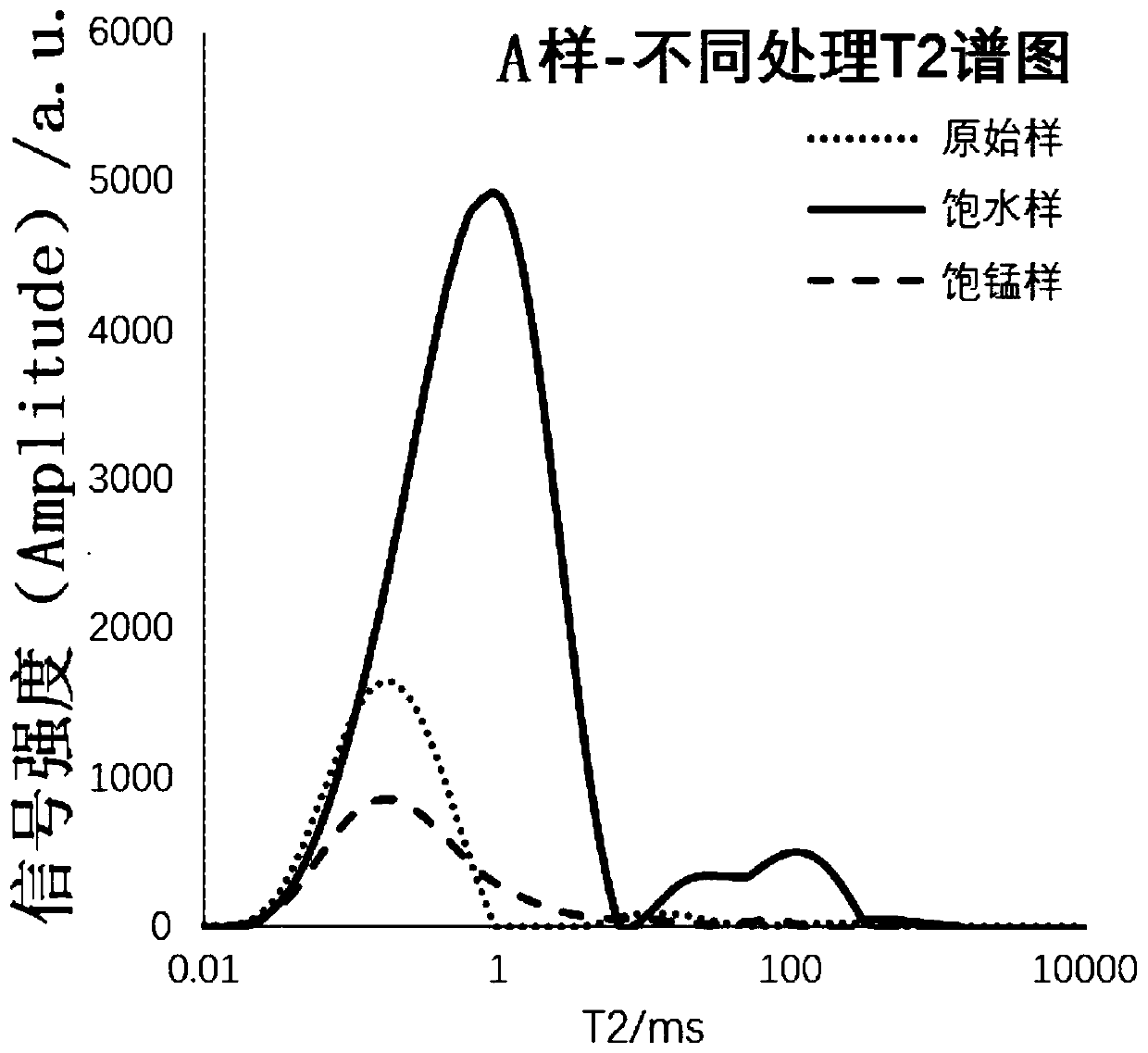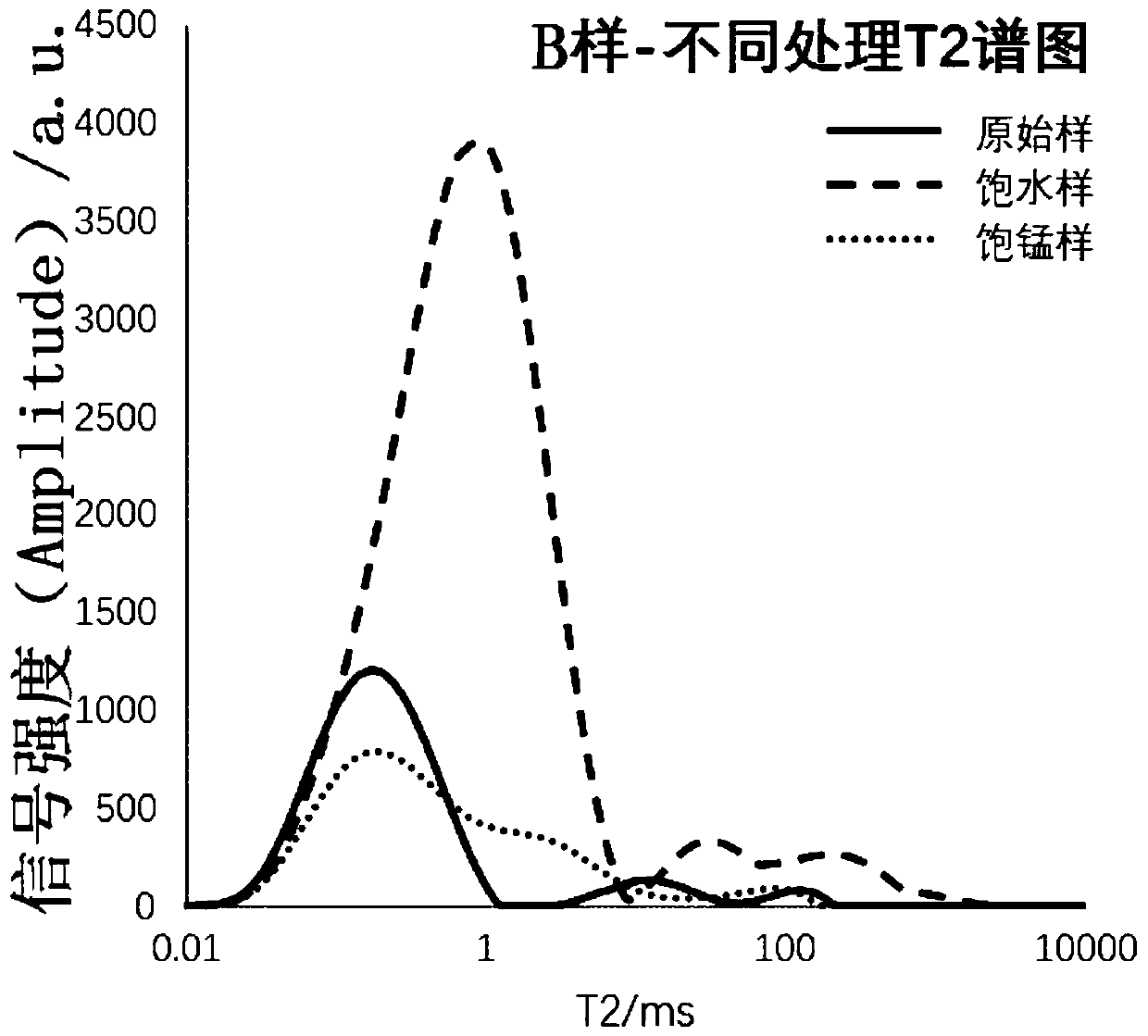Method for quantitatively evaluating oil content of continental lake basin low-porosity tight oil reservoir
A quantitative evaluation, low porosity technology, applied in measurement devices, analysis of suspensions and porous materials, analysis by nuclear magnetic resonance, etc. Problems such as large deviations in the determination of oil saturation
- Summary
- Abstract
- Description
- Claims
- Application Information
AI Technical Summary
Problems solved by technology
Method used
Image
Examples
Embodiment 1
[0050] This embodiment provides a method for quantitatively evaluating the oil content of low-porosity shale oil reservoirs in continental lacustrine basins, wherein the method includes:
[0051] 1) Determine the porosity of the reservoir core to be tested (the lithology is Chang 7 shale sample in the Ordos Basin) by helium gas adsorption method, and directly test the oil content of the reservoir core with a porosity greater than 10%, The oil content of the reservoir cores to be tested with a porosity less than or equal to 10% is determined by the follow-up method; the reservoir cores to be tested are prepared as samples A and B to be tested, and the porosity test results of the reservoir cores A and B to be tested are shown in Table 1 shown;
[0052] Table 1
[0053] lithology Gas porosity (%) shale 2.054(A), 1.652(B)
[0054] 2) Carry out nuclear magnetic resonance test on samples A and B to be tested respectively to obtain T2 spectra of samples A an...
Embodiment 2
[0067] This example provides a method for quantitatively evaluating the oil content of a low-porosity tight oil sandstone reservoir in a continental lacustrine basin, wherein the method includes:
[0068] 1) Determine the porosity of the reservoir core to be tested (the lithology is the Chang 7 sandstone sample in the Ordos Basin) by helium gas adsorption method, and directly test the oiliness and porosity of the reservoir core with a porosity greater than 10% The oil content of the reservoir cores to be tested with a porosity less than or equal to 10% is determined by the follow-up method; the reservoir cores to be tested are prepared into samples A and B to be tested, and the porosity test results of the reservoir cores A and B to be tested are shown in Table 4 Show;
[0069] Table 4
[0070] lithology Gas porosity (%) sandstone 8.665(A), 8.945(B)
[0071] 2) The reservoir cores with a porosity of less than 10% are prepared as samples A and B to be t...
PUM
| Property | Measurement | Unit |
|---|---|---|
| porosity | aaaaa | aaaaa |
| porosity | aaaaa | aaaaa |
Abstract
Description
Claims
Application Information
 Login to View More
Login to View More - R&D
- Intellectual Property
- Life Sciences
- Materials
- Tech Scout
- Unparalleled Data Quality
- Higher Quality Content
- 60% Fewer Hallucinations
Browse by: Latest US Patents, China's latest patents, Technical Efficacy Thesaurus, Application Domain, Technology Topic, Popular Technical Reports.
© 2025 PatSnap. All rights reserved.Legal|Privacy policy|Modern Slavery Act Transparency Statement|Sitemap|About US| Contact US: help@patsnap.com



